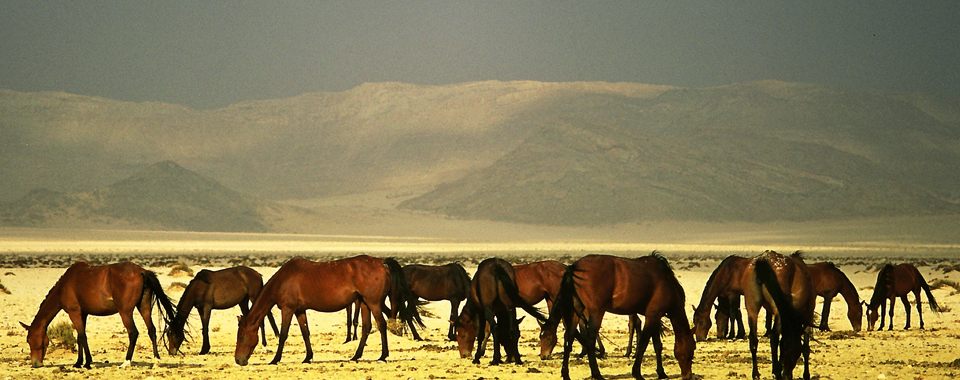The minuscule village of Aus: Trading post and mountain stronghold
May 3, 2013The Little Bay town of Lüderitz – A town extraordinaire
May 3, 2013By Ron Swilling
A major attraction in the area, the Namib wild horses have become synonymous with the virtues of the desert country where they evolved. They have survived in the arid wilderness in south-western Namibia for close to a century. Like wild horses worldwide, with the exception of the Mongolian wild horse/Przewalski’s horse, which still exists in its true and ancient genetic form, the resilient horses originated from domestic stock.
The two most likely theories of their origins are that they are the descendants of horses from the Kubub stud farm, an establishment established 35 km south-east of Garub, and horses belonging to the Union forces that were stationed at Garub during World War I.
Clearly identifiable characteristics of the excellent stud breeds still visible in the Namib population today attest to their link with the Kubub horses. These distinctive steeds belonged to Lüderitzbucht mayor, Emil Kreplin, and were bred for the racecourse and diamond fields. During the tumultuous war period, Kreplin was interned in the Union of South Africa. The horses would either have made their way to the permanent water source at Garub or during the depression years after the war when Kreplin returned to Germany.
When the Union base at Garub was bombed by the Germans in 1915, the horses that were assembled there scattered into the surrounding desert. It is thought that in their haste to pursue the German soldiers stationed at Aus, the Union forces would have had insufficient time to capture the horses that had fled to drink water in the mountain pools. These two groups of horses would have made up the core of the population of wild horses, with the odd stragglers joining them over the years. Over time, the horses returned to living as a wild Equus population, forming family groups and living according to the natural ways and seasons of the land.
This post was originally published in the Travel News Namibia Autumn 2013 edition.



